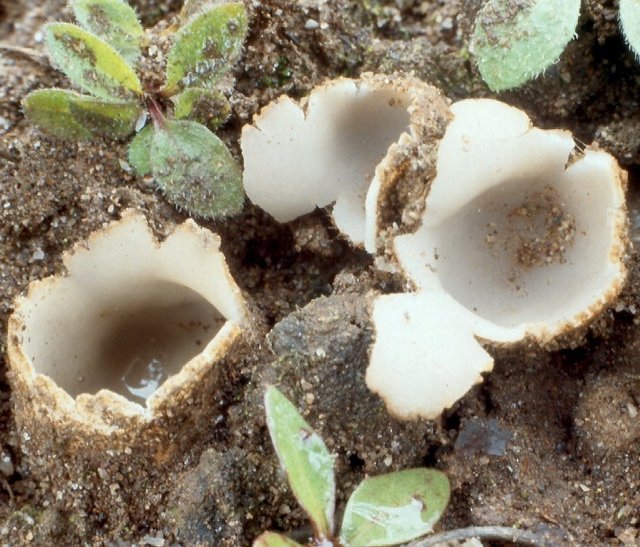Geopora sand (Geopora arenosa)
- Departament: Ascomycota (Ascomycetes)
- Subdiviziunea: Pezizomycotina (Pezizomycotins)
- Clasa: Pezizomycetes (Pezizomycetes)
- Subclasa: Pezizomycetidae (Pezizomycetes)
- Comanda: Pezizales (Pezizales)
- Familia: Pyronemataceae (Pyronemic)
- Gen: Geopora (Geopora)
- Tip: Geopora arenosa (Geopora sandy)
:
- sandy humaria
- Sarcoscypha arenosa
- sandy lachnea
- sandy scutellinia
- Sarcosphaera arenosa
- sandy graveyard

The fruiting body is 1-2 centimeters, sometimes up to three centimeters in diameter, develops as a semi-underground, spherical, then an irregularly shaped hole forms in the upper part and, finally, when ripe, the ball is torn by 3-8 triangular lobes, acquiring a cup-shaped or saucer-shaped shape.
Hymenium (inner spore-bearing side) from light gray, whitish-yellow to ocher, smooth.
The outer surface and margins are yellowish-brown, brown, with short, wavy, brown hairs, with grains of sand adhering to them. The hairs are thick-walled, with bridges, branched at the ends.
Pulpă whitish, rather thick and fragile. No special taste or smell.
dispute ellipsoid, smooth, colorless, with 1-2 drops of oil, 10,5-12*19,5-21 microns. Bags 8-spore. Spores are arranged in a bag in one row.
It is considered a fairly rare mushroom.
It grows singly or crowded on sandy soil and in areas after fires, on gravel-sand paths of old parks (in Crimea), on fallen needles. Growth occurs mainly in January-February; during cold, long winters, fruiting bodies come to the surface in April-May (Crimea).
Geopore sandy is considered an inedible mushroom. There are no data on toxicity.
It looks like a larger Geopore pine, in which the spores are also larger.
The sandy geopore may be similar to the variable Petsitsa, which also likes to grow in areas after fires, but the size of the geopore will not allow it to be confused with a much larger pezitsa.









